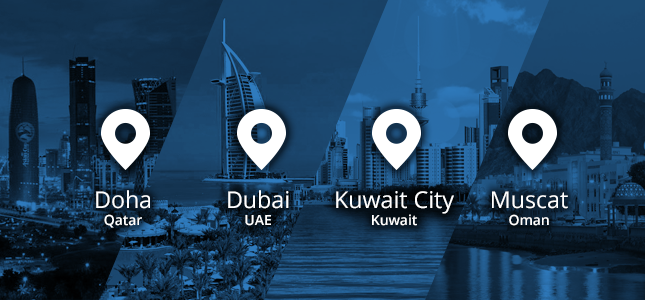Working From Home On 4G
In April 2015, my partner and I decided it was time to move in to our own (first) place together. As a teleworker this brings it’s own set of issues, mainly in the name of connectivity and climate. BT traditionally have been able to offer generous enough requirements, but as enterprise technology has evolved to consume more bandwidth, BT have slowly fallen behind. FTTC or Fibre To The Cabinet (VDSL), also known as “Superfast Fibre Optic Broadband” offered by the likes of BT and Sky to name but a couple, serves my needs well providing I have access to a local street cabinet that has a spare port on a VDSL capable device.
So it turns out, after confirmation from BT that our to be purchased house can indeed receive FTTC, we purchased, completed and started renovation work. It was time to place the BT order!
The BT Order
Brocade PyNOS Python Libraries
PyNOS v1.1 has been published. This is a python library that simplifies automating Brocade VDX systems. It is built on top of ncclient, and uses NETCONF to communicate with the VDX systems. Using the libraries is much simpler than writing your own NETCONF calls.
What can I do with it?
Use Python to script configuration or management tasks against VDX devices, e.g.:
- Configure interfaces & VLANs
- Find LLDP neighbors
- Find out which port a MAC is connected to
- Configure BGP
- Configure SNMP
You can also use Python as an interactive shell to run commands against multiple systems.
Examples:
Connect to device and check firmware version & uptime:
>>> import pynos.device
>>> conn = ('172.22.90.100', '22')
>>> auth = ('admin', 'password')
>>> dev=pynos.device.Device(conn=conn, auth=auth)
>>> dev.connection
True
>>> dev.firmware_version
'6.0.1'
>>> dev.system.uptime
{'seconds': '1', 'hours': '13', 'minutes': '0', 'days': '1'}
>>>
Change switchport description:
>>> with pynos.device.Device(conn=conn, auth=auth) as dev: ... dev.interface.description( ... int_type='tengigabitethernet', name='225/0/38', ... desc=’RTR1 Ethernet1’)
Who should use it?
Any Brocade VDX customers that want to automate network configuration – e.g. to integrate with their provisioning systems.
It’s helpful to have Continue reading
Securing the Line When Cutting the Network Cord
Original Post on Solarwind's Thwack Community Security for mobile devices in the federal space is improving, butManaging the Robot Overlords of SDN
There’s a new Battlebots show on ABC. (And doesn’t it speak volumes that it’s in primetime on a major network instead ofGoogle Reorganizing Into an Alphabet Soup of Companies
 Possibly to appease Wall Street, Google is creating a corporate structure to separate ad revenues from sci-fi experiments.
Possibly to appease Wall Street, Google is creating a corporate structure to separate ad revenues from sci-fi experiments.
Rackspace Prospects Amazon Web Services, Lowers 2015 Forecast
 Rackspace's Q2 features good news, bad news, and a share buyback.
Rackspace's Q2 features good news, bad news, and a share buyback.
Now serving the Middle East: 4 new data centers, partnerships

Our last embarkation into a new geography coincided with a significant milestone: our 30th data center (and first in Africa) in Johannesburg, South Africa. And as we march past number 40, we’re proud to announce yet another. Introducing CloudFlare’s latest points of presence (PoPs) in Doha, Qatar; Dubai, United Arab Emirates; Kuwait City, Kuwait; and Muscat, Oman. These data centers are the first wave in our MENA (Middle East/North Africa) expansion, and the 39th, 40th, 41st and 42nd data centers, respectively, to join our global network.
Up to this point all CloudFlare traffic delivered to the MENA region was served from our London, Frankfurt, Marseille, Paris and/or Singapore data centers, with round trip latency of up to 200-350ms. As in Africa, local bandwidth in MENA is notoriously expensive making it cost prohibitive to deliver content locally. That is (once again), until now! We're proud to announce the first of a series of agreements with regional carriers including Etisalat, Omantel, Ooredoo, and Zain to help build a better Internet in the region.

How to build a better Internet
A few of the necessary ingredients to build a better Internet include international connectivity (often in Continue reading
Docker Demo Webinar: FAQ
Thanks again to everyone who joined last week’s Docker Demo webinar! There were more questions than time to answer them – and we wanted to share the Q&A publicly so everyone had access to this information on their Docker journey. Don’t … ContinuedThe Cloud Security Boom Has Just Started
 Information security technology is undergoing a generational shift. Once thought of as a collection of point solutions, security technology is moving to the cloud, where a coordinated suite of real-time software tools are needed.
Information security technology is undergoing a generational shift. Once thought of as a collection of point solutions, security technology is moving to the cloud, where a coordinated suite of real-time software tools are needed.